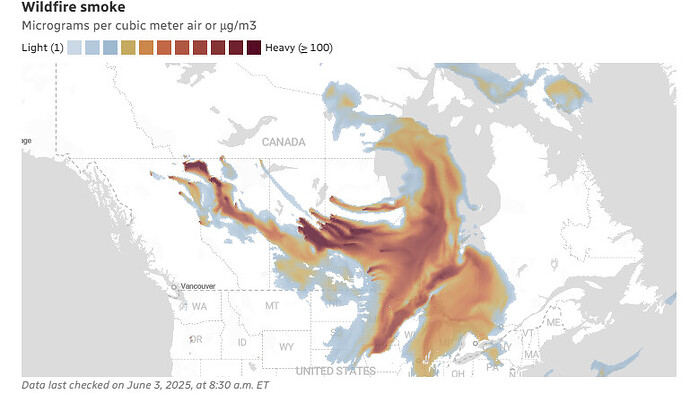Bang on.
How about paying Wales for the water taken too!
I looked up global human water consumption: we are currently at 112 billions litres per day.
Only Greenland loses 30m tonnes of ice every hour, that’s roughly 30m tonnes of water, so 30 billions litres. In one day, Greenland loses thus 720 billions of litres. So, we’d need to use and drink six to seven times more than we do, only to absorb Greenland’s loss. That’s before you start taking into account the Arctic and the Antarctic…
Not sure if anyone’s noticed this, but what you drink doesn’t stay in your body.
Filtering what doesn’t stay in the body could be an option.
Right up there with dimming the sun in the list of batshit ideas.
Are you there Ed?
Being honest, right now I dont think anything should be off the table.
Well you can consider turning shit and waste into usable water. Sounds disgusting but cheaper than desalination plants and can meet huge water needs.
I believe that’s what Singapore already does (sorry to Singapore-splain you @gasband): NEWater - Wikipedia
Norway has launched the world’s first wireless charging road for electric vehicles (EVs), specifically in the city of Trondheim. This innovative system utilizes inductive charging technology, where copper coils embedded in the road surface create an electromagnetic field that wirelessly transmits energy to compatible EVs as they drive over the charged section.
Technology:
The road uses inductive charging, where energy is transferred wirelessly from embedded coils in the road to a receiver on the EV.
Location:
The system is operational in Trondheim, Norway.
Pilot Project:
The 100-meter stretch of road is part of a pilot project aimed at testing the feasibility of charging electric buses while they are in motion.
Benefits:
The system aims to eliminate the need for frequent charging stops for electric buses, potentially reducing downtime and increasing operational efficiency.
International Collaboration:
Israeli tech company Electreon Wireless has played a key role in developing and implementing this technology in Norway.
Testing and Evaluation:
The system will be tested for a year with electric buses from Chinese manufacturers Yutong and Higer, with a focus on evaluating its performance under various conditions, including Trondheim’s winter climate.
There was item on our news last night about rainbow coloured solar panels being fitted on the roof of a stand at St. Pauli’s stadium in Hamburg. The colours are related to St Pauli’s support for LGBT rights (I’d never heard of coloured panels before, but it’s a cool idea) but what struck me is what an inherently good idea it is. They estimate that this will produce 285,000 kWh per year electricity and this would be a great model for a lot of clubs whose stadiums are essentially just sitting around doing nothing for 99% of the year.
Obviously, it would rather depend on the stadium roof being strong enough to support the extra weight.
I managed to find an English language version of the story here:
No chance of similar panels being installed at the falling apart Old Trafford, then.
Plus it rains all the time in Manchester.
Well, it does spring to mind, although they are meant to be building a new stadium. Of course, sod all chance of it happening as they run by an oil-cunt.
I think even when it’s raining/cloudy they still do generate a substantial amount of energy, just not full capacity obviously.
So even less capacity when that genius Millibands master plan to dim the sun takes effect?
Not much - insolation is 10-20% of full sun, so broadly that is about where the output is.
The colouring makes the panels less efficient that the conventional blue-purple, because it means more photons from the usable spectrum are being bounced off. The spectral response of a silicon cell starts at around 300 nm, just below the visible spectrum, and extends up far into the infrareds to around 1100. The thickest part of the curve really starts at the top of the visible spectrum at 700. The conventional blue is really a function of a silicon cell absorbing a much higher percentage of the photons in the other frequencies, so tinting a cell red for example means it is reflecting photons it would otherwise absorb. Apparently that efficiency hit is relatively small now as the coloration doesn’t bounce off any infrared frequencies.
I get that, but if you’re not too concerned about the economics of it, I’d say getting 10-20% of full output over a whole stand or even stadium is better than nothing. And that’s a pretty worst-case scenario.
But also regarding the economics of it, in this world of geopolitical upheaval, you never know…
We are seeing another awful fire season - within a day or two we are expected to have smoke as bad as 2023 (see June 2023 in this thread)
What is the main causes of these fires?
Well, to be fair, we don’t sweep our forests.
The TLDR is no snowpack due to climate change, so the relatively dry spring that would normally see thaw and drying land is drying already dry land - creating perfect conditions for fires.



